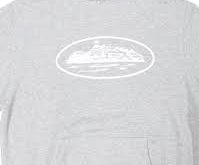Landscape fabric is a versatile tool in gardening and landscaping, offering numerous benefits such as weed control, soil stabilization, and improved garden aesthetics. If you’re looking to create a low-maintenance garden or landscaping project, landscape fabric can be a valuable addition to your toolkit. This guide will walk you through everything you need to know about How to Use Landscape Fabric
Introduction
Landscape fabric, also known as weed barrier fabric, is a geotextile material used primarily to control weed growth in gardens and landscaped areas. Made from woven or non-woven synthetic materials, it is placed directly over the soil to block sunlight and prevent weeds from sprouting while allowing water and nutrients to pass through. Beyond weed control, landscape fabric helps with soil erosion, moisture retention, and overall garden health.
What You’ll Need
Before you begin, gather the following materials:
- Landscape Fabric: Choose the right type of fabric for your project. Thicker, woven fabrics are more durable and effective for long-term weed control, while lighter, non-woven fabrics are suitable for temporary or seasonal use.
- Utility Knife or Scissors: For cutting the fabric to fit your garden or landscaped area.
- Garden Staples or Pins: To secure the fabric to the ground and prevent it from shifting.
- Mulch or Decorative Stones: To cover the fabric, protect it from UV damage, and enhance the appearance of your garden.
- Measuring Tape: To accurately measure the area where you’ll be laying the fabric.
- Gloves: For protecting your hands during installation.
Preparing the Area
Proper preparation is key to the successful installation of landscape fabric. Follow these steps to get your garden or landscape ready:
Step 1: Clear the Area
Start by removing any existing weeds, rocks, and debris from the area where you plan to install the fabric. This step is crucial because any weeds left underneath can continue to grow and push through the fabric. Use a hoe, rake, or hand tools to ensure the area is clean and free of obstructions.
Pro Tip: For stubborn weeds, consider applying a natural herbicide or manually pulling them out to prevent regrowth.
Step 2: Level the Soil
After clearing the area, take the time to level the soil. Uneven soil can create gaps under the fabric, allowing weeds to grow or water to pool, which can damage the fabric. Use a rake to smooth the surface and create a level, even foundation for the fabric.
Pro Tip: Ensure the soil is well-drained before laying the fabric. Poor drainage can lead to waterlogging, which can weaken the fabric and promote mold growth.
Step 3: Measure and Cut the Fabric
Measure the area where you’ll be installing the landscape fabric. Use a measuring tape to get accurate dimensions and cut the fabric accordingly. It’s better to cut slightly larger pieces than you need, as you can always trim the excess later.
Pro Tip: If you’re covering a large area, overlap the edges of the fabric pieces by about 6 inches to prevent weeds from growing through the seams.
Installing the Landscape Fabric
With the area prepared and the fabric cut to size, you’re ready to begin the installation process. Follow these steps for optimal results:
Step 1: Lay Out the Fabric
Carefully lay the fabric over the prepared area, ensuring it covers the entire surface. If you’re working on a sloped area, start at the top and work your way down to prevent the fabric from shifting. Smooth out any wrinkles or folds as you go.
Pro Tip: For added stability, consider using a garden hose or other weighted objects to hold the fabric in place while you secure it.
Step 2: Secure the Fabric
Use garden staples or pins to anchor the fabric to the soil. Place the staples around the edges and at intervals across the fabric to keep it secure. Make sure the staples are pushed down firmly into the ground, but avoid pulling the fabric too tight, as this can cause it to tear or lift.
Pro Tip: In windy areas, you may need to use additional staples to prevent the fabric from lifting during strong gusts.
Step 3: Overlap Edges
If you’re covering a large area with multiple pieces of fabric, be sure to overlap the edges by at least 6 inches. This overlap prevents weeds from growing through the seams and ensures complete coverage.
Pro Tip: When working around plants, cut an “X” shape in the fabric where you want the plant to go, then fold back the flaps and dig your hole. After planting, fold the flaps back down to cover the soil around the plant.
Finishing Touches
Once the landscape fabric is in place, it’s time to add the finishing touches to complete your project.
Step 1: Cut Holes for Plants or Trees
If you’re installing the fabric in an area where plants or trees will be placed, use a utility knife or scissors to cut holes in the fabric. Make the cuts just large enough to accommodate the root ball of each plant. Fold back the fabric flaps and dig the planting hole, then replace the flaps around the base of the plant to minimize exposure.
Pro Tip: To reduce the risk of weed growth around plants, consider placing a small layer of mulch directly over the exposed soil.
Step 2: Apply Mulch or Decorative Stones
Cover the landscape fabric with a layer of mulch or decorative stones. This not only enhances the appearance of your garden but also protects the fabric from UV damage and helps retain moisture in the soil. Spread the mulch or stones evenly, making sure to cover the entire surface of the fabric.
Pro Tip: Avoid using too much mulch, as a thick layer can prevent water from reaching the soil. A 2-3 inch layer is typically sufficient.
Step 3: Ensure Proper Maintenance
After installation, it’s important to maintain your landscape fabric to ensure it continues to perform effectively. Check periodically for any signs of wear and tear, such as holes or fraying, and replace or repair the fabric as needed. Reapply mulch or stones as they settle or decompose to maintain an even layer.
Pro Tip: Keep an eye on the edges of the fabric, especially after heavy rain or strong winds, as these areas are most likely to lift or become exposed.
Common Mistakes to Avoid
While landscape fabric is relatively easy to install, there are some common mistakes that can reduce its effectiveness or lead to problems down the line. Here’s what to watch out for:
- Not Securing the Fabric Properly: If the fabric isn’t anchored securely, it can shift over time, allowing weeds to grow through the gaps. Use enough garden staples or pins to keep the fabric firmly in place.
- Using the Wrong Type of Fabric: Not all landscape fabrics are created equal. Make sure you choose the right type for your project—thicker, woven fabrics for long-term use and lighter, non-woven fabrics for temporary applications.
- Neglecting to Prepare the Soil: Skipping soil preparation can lead to uneven surfaces, poor drainage, and ineffective weed control. Take the time to clear, level, and amend the soil before laying the fabric.
- Overlooking Edge Overlap: Failing to overlap the edges of the fabric can create gaps where weeds can grow. Always overlap the edges by at least 6 inches.
Tips for Long-Term Maintenance
To ensure your landscape fabric continues to provide benefits for years to come, follow these maintenance tips:
- Check for Wear and Tear: Inspect the fabric periodically for any signs of damage, such as tears, holes, or fraying edges. Promptly repair or replace damaged sections to prevent weeds from taking hold.
- Reapply Mulch or Stones: Over time, mulch can decompose and stones can settle, reducing the effectiveness of the fabric. Regularly add new mulch or stones to maintain an even layer and protect the fabric.
- Monitor Plant Growth: As your plants grow, they may outgrow the holes you originally cut in the fabric. If necessary, enlarge the holes to accommodate the growth, ensuring the fabric doesn’t restrict the plants.
Conclusion
Using landscape fabric is an effective way to control weeds, conserve moisture, and create a neat, low-maintenance garden. By following the steps outlined in this guide, you can ensure a successful installation that provides long-lasting benefits. Whether you’re a seasoned gardener or a landscaping novice, landscape fabric can help you achieve a beautiful, well-maintained outdoor space with minimal effort.
 Daily Blogger News Stay updated with the latest trends and insights. Your reliable source for daily updates and information.
Daily Blogger News Stay updated with the latest trends and insights. Your reliable source for daily updates and information.







